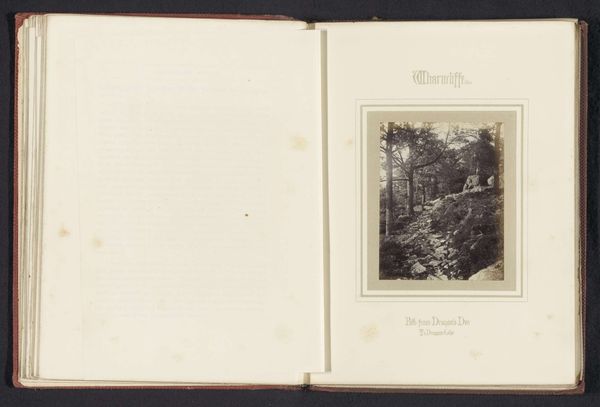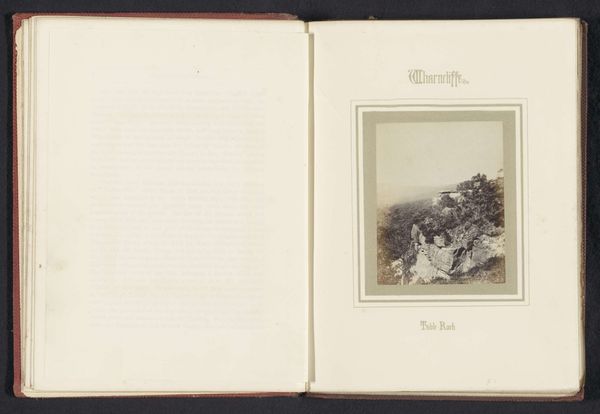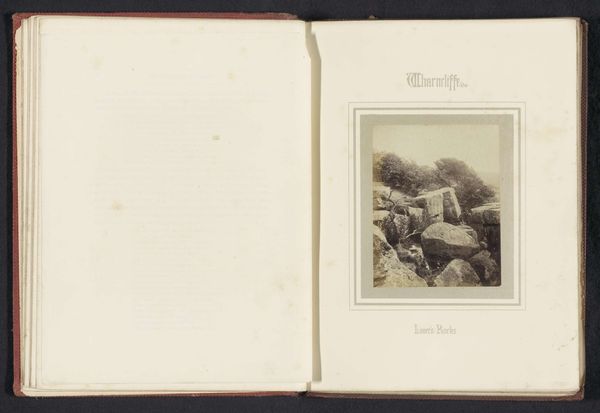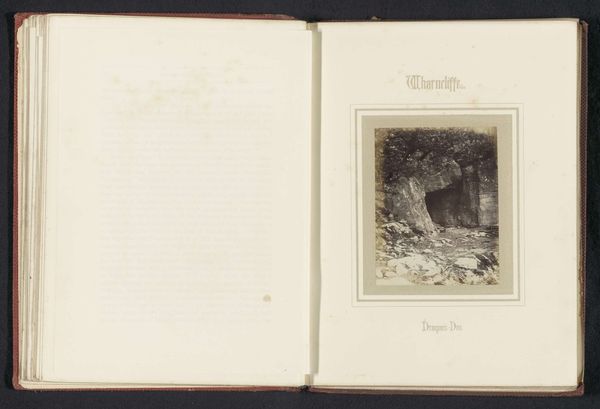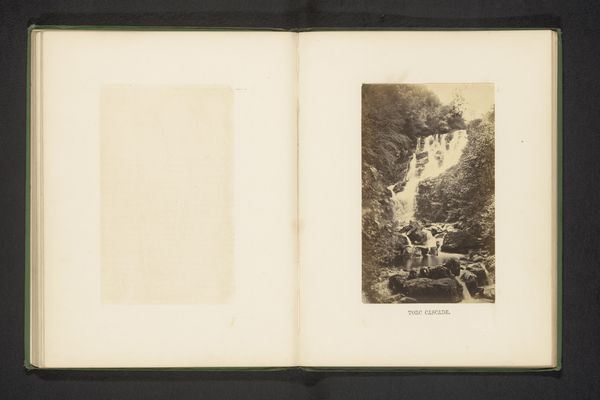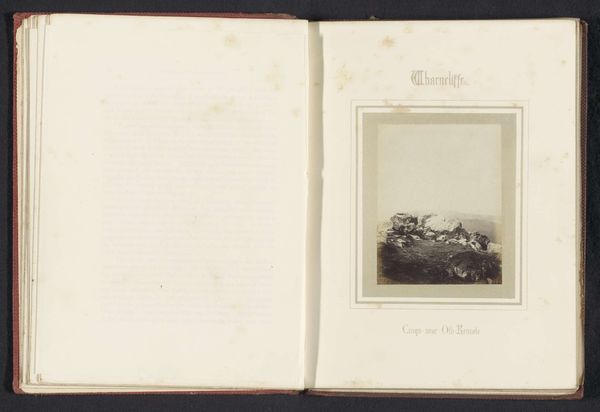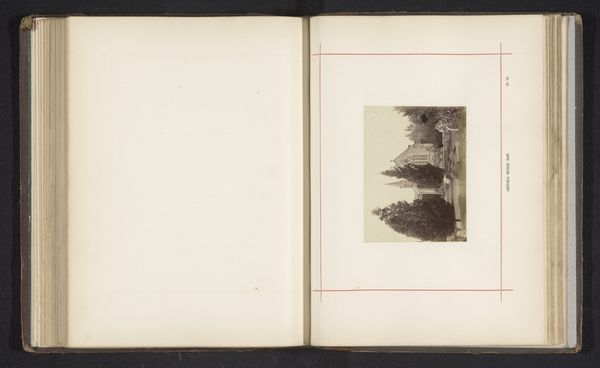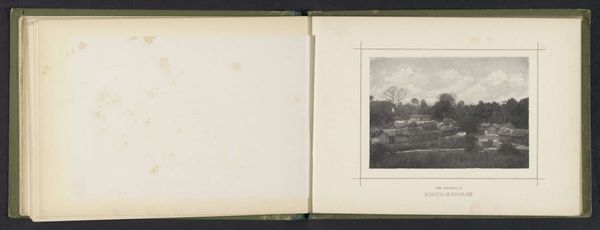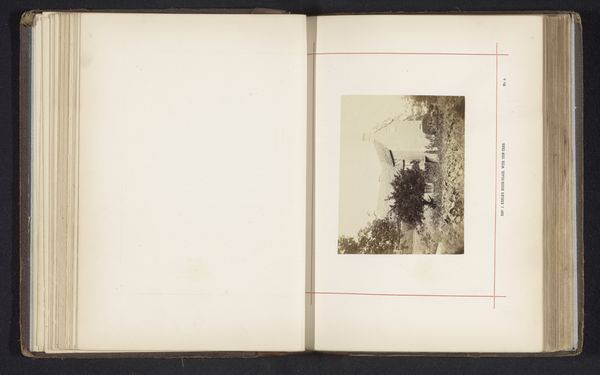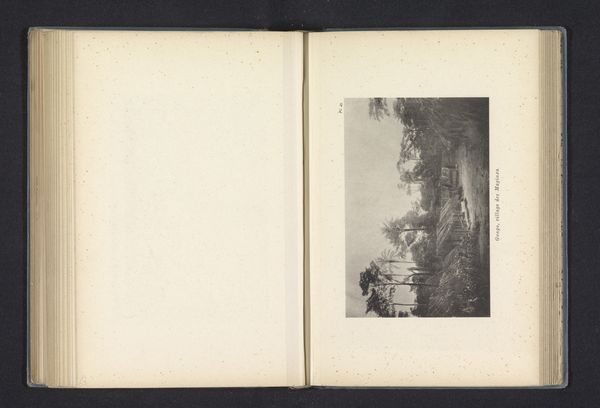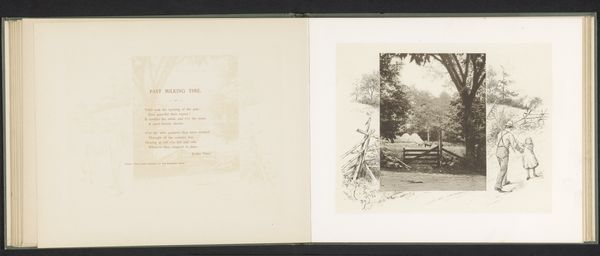
Dimensions: height 95 mm, width 73 mm
Copyright: Rijks Museum: Open Domain
Editor: Here we have "Cascade Rock," a gelatin silver print from before 1864 by Theophilus Smith. It's part of a bound volume. I find its misty quality quite evocative, like a romantic vision of nature. What do you see in this piece? Curator: The romance you observe is precisely where I’d start. How might that romantic framing serve broader cultural ideas? Consider the historical context: the mid-19th century, during a time of rapid industrialization. These manufactured landscapes, pictorialist photographs such as Smith's served as a retreat into a supposedly pure, untouched nature. Yet, access to these landscapes were often regulated, reflecting and reinforcing existing social hierarchies. Who got to experience this 'sublime' nature, and who was excluded? Editor: That’s interesting. I hadn't thought about who gets access. So the image is presenting a selective vision? Curator: Exactly. The very act of framing this cascade as an object of beauty obscures the labor and often, displacement, inherent in making that view accessible. Think about whose perspectives are privileged and whose are erased in this seemingly innocent depiction of natural beauty. Does the photograph address labor, environmental impact or class issues at all? Editor: I see your point. I was drawn to the aesthetic, but it's also crucial to think critically about what’s not being shown and the power dynamics at play. Thanks, I’ll never look at a landscape quite the same way again! Curator: That’s the goal – to use the aesthetic pull to then investigate what ideology may lay beneath, or alongside the initial "beauty" of the scene. This photography becomes not just a pretty picture, but a document to interrogate about social norms and history.
Comments
No comments
Be the first to comment and join the conversation on the ultimate creative platform.
